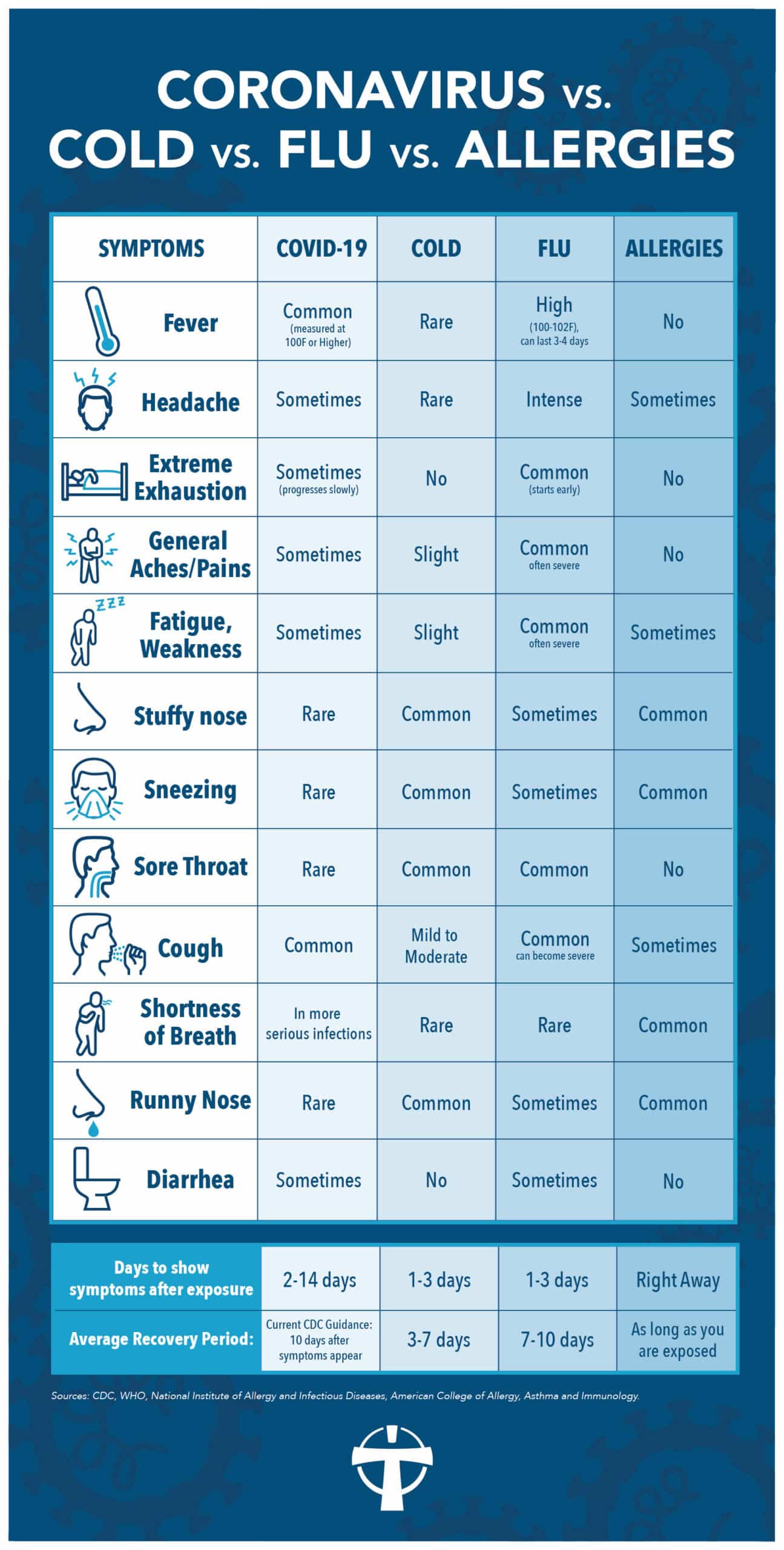Your guide to avoiding coronavirus, flu and confusion this flu season.
It sometimes feels like the more we learn about coronavirus, the harder it is to discern it from other illnesses.
Now, flu season is upon us now, which is sure to present perplexing questions: Does having a fever mean I have COVID? Is this stuffy nose the result of a cold, or could it be the flu? Or allergies?
There are at least a dozen symptoms shared by some or all of those ailments, making it nearly impossible to know what you have without a diagnostic test, a medical exam or both.
The good news is that, in many cases, you don’t need to know the cause in order to know what to do. The key is to watch for changes in your or family’s health and to respond promptly.
To help, we’ve put together this side-by-side comparison of symptoms as a quick reference.
CORONAVIRUS vs. COLD vs. FLU vs. ALLERGIES
There are lots of similarities between illness from the coronavirus and the flu, but there are some differences that help doctors distinguish them.
A key difference is the incubation period for the viruses — that is, the time it takes to develop symptoms after exposure to it. The flu always strikes quickly, typically one to three days. Coronavirus, however, can take anywhere from two to 14 days. Which is why it’s important to isolate right away after being exposed so as not to unknowingly infect others.
People usually recover from the flu in seven to 10 days, while it’s believed that it takes at least 10 days to recover from the coronavirus, especially those with severe cases, which can mean several weeks or even months of gradual recovery.
The symptoms themselves are a bit more tricky to distinguish. Below is a list of 12 symptoms that are easily confused among coronavirus, the flu, the cold and allergies.

Fever: Coronavirus and flu both cause fever, but it’s rare for the common cold. COVID-19 patients usually have a fever of 100 F or higher, while flu sufferers often experience fever of 100F to 102F that lasts three to four days.
Headache: COVID-19 patients sometimes have headaches. Flu sufferers often experience intense headaches. Headaches are rare with the cold, but sometimes caused by allergies.
Extreme exhaustion: Patients with the coronavirus sometimes experience this intense form of fatigue, but it typically progresses slowly. Flu, on the other hand, often causes severe exhaustion as an early symptom.
Body aches and pains: The flu virus often causes body aches that are severe. Aches are sometimes present with coronavirus, but not always.
Fatigue and weakness: Very similar to body aches, fatigue and weakness are more common and usually more severe with the flu than with the coronavirus.
Stuffy or runny nose, sneezing, sore throat: One or more of these are sometimes present with the flu, but they’re all rare for the coronavirus.
Cough: Common to both flu and coronavirus.
Shortness of breath: A serious symptom which occurs in severe cases of coronavirus, but rarely with the flu. Seek immediate medical attention immediately if you experience this life-threatening symptom.
Diarrhea: Sometimes caused by both coronavirus and the flu.




